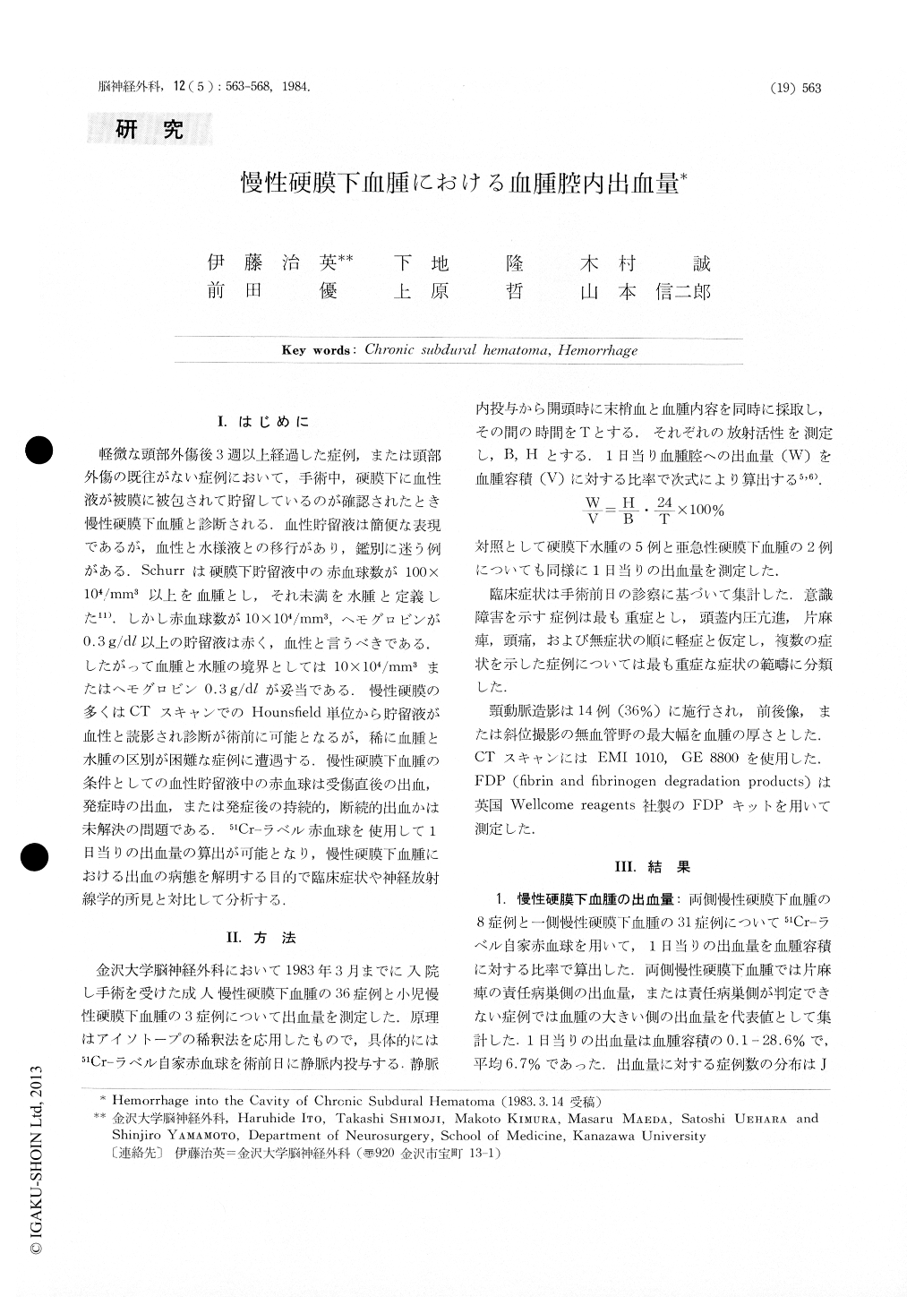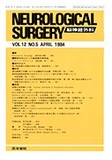Japanese
English
- 有料閲覧
- Abstract 文献概要
- 1ページ目 Look Inside
I.はじめに
軽微な頭部外傷後3週以上経過した症例,または頭部外傷の既往がない症例において,手術中,硬膜下に血性液が被膜に被包されて貯留しているのが確認されたとき慢性硬膜下血腫と診断される.血性貯留液は簡便な表現であるが,血性と水様液との移行があり,鑑別に迷う例がある.Schurrは硬膜下貯留液中の赤血球数が100×104/mm3以上を血腫とし,それ未満を水腫と定義した11).しかし赤血球数が10×104/mm3,ヘモグロビンが0.3g/dl以上の貯留液は赤く,血性と言うべきである.したがって血腫と水腫の境界としては10×104/mm3またはヘモグロビン0.39/dlが妥当である.慢性硬膜の多くはCTスキャンでのHounsfield単位から貯留液が血性と読影され診断が術前に可能となるが,稀に血腫と水腫の区別が困難な症例に遭遇する.慢性硬膜下血腫の条件としての血性貯留液中の赤血球は受傷直後の出血,発症時の出血,または発症後の持続的,断続的出血かは未解決の問題である.51Cr-ラベル赤血球を使用して1日当りの出血量の算出が可能となり,慢性硬膜下血腫における出血の病態を解明する目的で臨床症状や神経放射線学的所見と対比して分析する.
Mean quantity of daily hemorrhage into the hema-toma cavity was determined at the craniotomy in 39cases with chronic subdural hematoma.
Mean daily hemorrhage amounted 6.7 per cent ofhematoma volume. Those in infancy, adults young-er or older than 70 years old were 6.8%, 6.9% and6.2%, respectively. When the period from headtrauma till the craniotomy was less 3 months, onefourth of cases showed more bleeding than 10% ofhematoma content into the cavity. Over 3 monthsafter the head trauma, hemorrhage decreased in volume,amounted less than 2%.

Copyright © 1984, Igaku-Shoin Ltd. All rights reserved.


